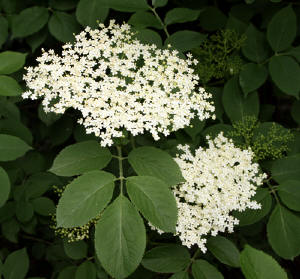 Part II: The All-Important Facial Mask
Part II: The All-Important Facial Mask
Ah yes, the facial mask. Quite possibly the most intantly transformative part of your home facial. Facial masks should be applied to a very clean face and are wonderful when preceeded by an herbal facial steam, such as that outlined in Part I. Clay masks have been used for refining delicate facial tissue for ages, as it serves to detoxify, smooth, reduce the appearance of pores, and balance facial tone, including the reduction of redness and even flakiness.
What you need here are 1) good quality facial clay, and 2) botanicals that will help address any facial issues you might have. Below, I will help you in this process by giving you a sample structure for creating your own simple facial mask, depending on your skin type.
Facial Clays:
Cosmetic clays of different varieties are quarried from mines all over the world. Some examples of facial clays are French green clay, Moroccan Rhassoul red clay, Fuller’s Earth clay, Dead Sea clay, Bentonite clay, and Kaolin (white) clay. Having good quality clay is important, as you don’t want a mask that is filled out with lesser quality ingredients, and different clays can provide a different outcomes. Good sources for fine clays include Mountain Rose Herbs, Essential Wholesale, and From Nature with Love. In the following paragraphs, I’ll talk about two good quality, often used, and highly effective facial clays: French Green Clay and Moroccan Rhassoul red clay.
Fench green clay is heavily used in the cosmetic industry as a facial clay, but that said, it is difficult to get significant quantities of any effective clay in over-the-counter facial masks. You are better off making your own, purchasing masks from a reputable, quality-driven seller (a-hem), or attending a good spa for a professional facial. If a clay is purchased already ‘wet’, it must be used quickly once opened or is subject to mold or bacteria growth. It is for this reason that I sell my facial clay & herb masks as powders. This way, we can avoid high levels of preservatives in a facial treatment, and you can also control your ‘wetting agent’ to better suit your skin type.
French green clay is a great clay for all skin types, but you might want to mix it with French white (Kaolin) clay if you have sensitive skin, as it is a ‘strong’ clay, in terms of its drawing power. A wonderful detoxifier for the skin, green clay draws out impurities, toxins, and pollutants from the skin, all the while tightening pores and smoothing the facial tissue. This drawing action also serves to stimulate circulation, bringing blood to the surface of thes skin and thus, revitalizing and ‘awakening’ facial tissue. French green clay is also rich in minerals and nutrients, and thus adds additional skin nourishing power to a facial application. Try using this clay with some of the herbs or fruits for normal to oily skin below to help balance oily skin and treat acne issues.
 Moroccan Rhassoul red clay:
Moroccan Rhassoul red clay:
Drawn from below the Atlas mountains in Morocco, rhassoul clay is a centuries old, but also a newly popular facial clay with Western spas. This fine, red clay has wonderful skin-balancing properties. It is suited for all skin types, but especially loved among those with mature, dry, and/or sensitive skin. It acts as a gentle exfolliant but is also rich in minerals such as Silica, Magnesium, Iron, Calcium, Potassium and Sodium. Clinical studies have found (www.irsi.org) that rhassoul clay reduces dryness (79%), reduces flakiness (41%), improves skin clarity (68%), improves skin elasticity and firmness (24%), and improves skin texture (106%). I am not even sure how 106% is even possible, but this clay definately does good work! My own Moroccan Rhassoul mask incorporates healing myrrh, the humectant honey, oat starch, and mineral-rich dead sea salts for a nutrient-rich powerhouse that has moisturizing, healing, and soothing properties on top of the clay’s detoxifying properties.
Herbal, Vegetable, or fruit additions for various skin types:
1) Normal to Dry ~ irish moss, chamomile, apple, oranges, avocado, pear, melon
2) Normal to average or combination skin~ lavender, rose petals, chamomile, tangerine, carrot, peppermint, banana, peach, zucchini
3) Normal to oily skin~ kelp, lemongrass, lemon peel, orange peel, cherry, strawberry, peach, apricot, tomato
4) Troubled skin in need of healing~comfrey root, calendula blossoms, lavender, chamomile, holy basil, red sandalwood, myrrh, neem
Other helpful additives:
Oatmeal (soothing, softening, moisturizing), Honey (antibacterial, humectant, hydrating), Rosehips (exfoliant), Apricot Kernal meal (exfoliant), Yoghurt powder (nutrients, moisturizing, smoothing), Buttermilk powder or Milk powder (nutrients, moisturizing, smoothing), Dead sea salts (minerals, exfoliant), Vinegar (pH balancing, antiseptic), coffee grounds (exfoliant)
Wetting Agents: As the facial powder will be dry, you will need to choose a ‘wetting agent’ according to the condition or needs of your skin. Of course, regular filtered or spring water can be used, but you could also choose your favorite (non-alchohol) astringent, natural cleanser, or heavy cream, milk, or yoghurt for more moisturizing effect. Botanical hydrosols, or distillates, are the water by-product of steam distillation, when the essential oil is extracted from a plant. Some distillers work specifically to produce incredibly good quality distillates that can also be used for aromatherapeutic use because the hydrosol retains many of the same beneficial properties as the essential oil or indeed, the plant itself. Hydrosols or pure aloe vera are my favorite choices for facial mask applications.

Aloe Vera gel is a fabulous wetting agent, but be sure to get the good stuff! You want the natural, liquid type of gel that is also drinkable (though not the kind sold as a kind of pop drink in Asian countries). Aloe is a bit ‘drying’ and also tonifying, so it’s great for oily skin, in addition to its well-known skin healing properties.
Rose Distillate or Hydrosol is another wonderful wetting agent that has age-old tonifying properties, also blessed with a heavenly fragrance. It is also said to reduce the appearance of capillaries, and thus can be fabulous for mature and/or damaged skin. Real Bulgarian rose hydrosol is a wonderful treat to the senses with tremendous benefit to the skin.
Lavender Distillate or Hydrosol seems to be helpful for rosaccea but is also effective for all other skin types. It’s tonifying strength makes it a good choice for oily skin. It smells nice but not the same as the essential oil, so be prepared for the difference! I use this in my Lavender facial cream to address the tonifying needs of normal to oily skin types, but because it also appears to help address the needs of those with rosacea, or an inflammed, reddish, sensitive skin.
Orange Blossom (Neroli) Distillate or Hydrosol is a lovely, fragrant and very safe hyrosol. Yes, it’s tonifying, but it is also appropriate for sensitive, dry skin, as well as children! You can use this very gentle hydrosol in myriad ways. I make my Orange Rosewood facial cream, and its mate, the Orange Blossom (unscented) cream with this hydrosol because of its therapeutic effect. The Orange Blossom cream is called thus because though it is unscented, it is still gifted with the lovely, light scent of the neroli flower.
Some other hydrosols: Lemon balm (uplifting, fragrant, tonifying), Rose Geranium (gently astringent, tonifying), Sandalwood (healing, balancing), Cucumber (soothing, cooling), Chamomile (soothing, sensitive, anti-inflammatory), Witch hazel (tonifying, astringent)
NOTE: For herbs, use powdered herbs or grind them into a fine powder by using a clean coffee or spice grinder. For fruit and/or vegetable additions, you can just squeeze out the juice and add the juice to the clay to wet it, and then mix in the pulp and apply directly to the face)
Directions:
Add 1 – 2 Tbsp. facial clay
Add 1 tsp powdered herb (or herb blend)
Add 1 tsp additonal additive, such as powdered oatmeal, milk, or honey
Add wetting agent a little at a time until the powder becomes a smooth paste. Don’t add too much!
Apply to clean face, avoiding the eyes, and leave application on until it dries and becomes tight, aiming for 15-30 minutes. Use a warm, wet washcloth to gently remove mask and behold the radient glow of your refreshened skin! You may indeed experience some redness for a little while after the application, so it’s best to do this at night, before bedtime. By morning, the redness should be gone. Facial masks should be done up to once a week, but it’s good practice to do a mask at least once a month to refresh the skin and rid it of environmental pollutants and toxins, particularly if you live in an urban environment.



 Posted by lilithsapothecary
Posted by lilithsapothecary 









